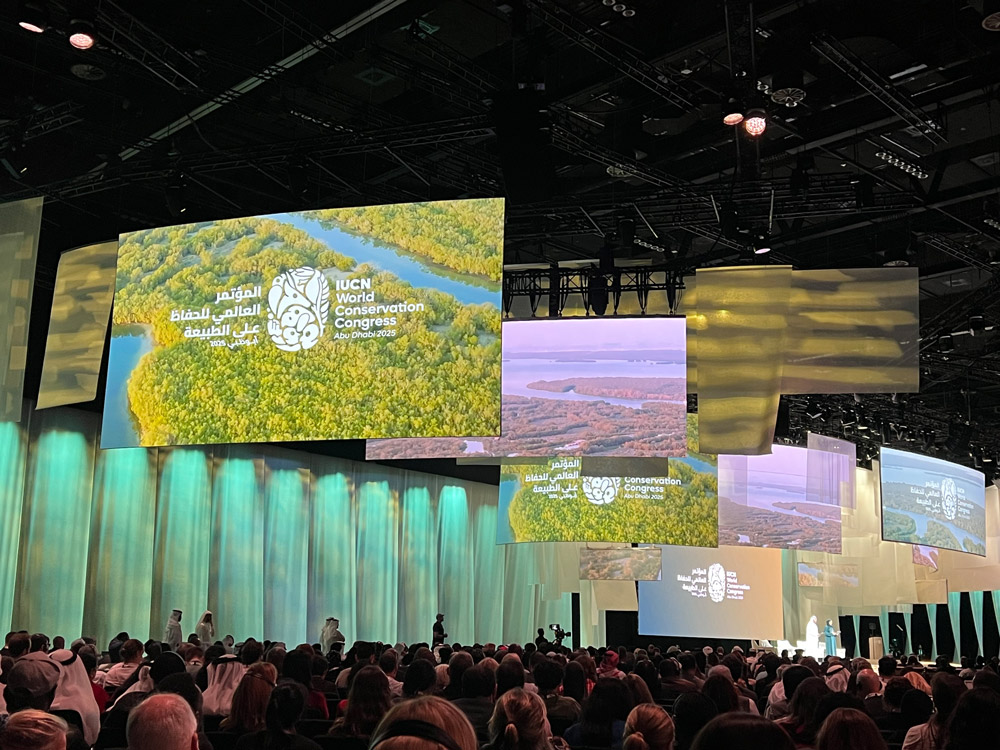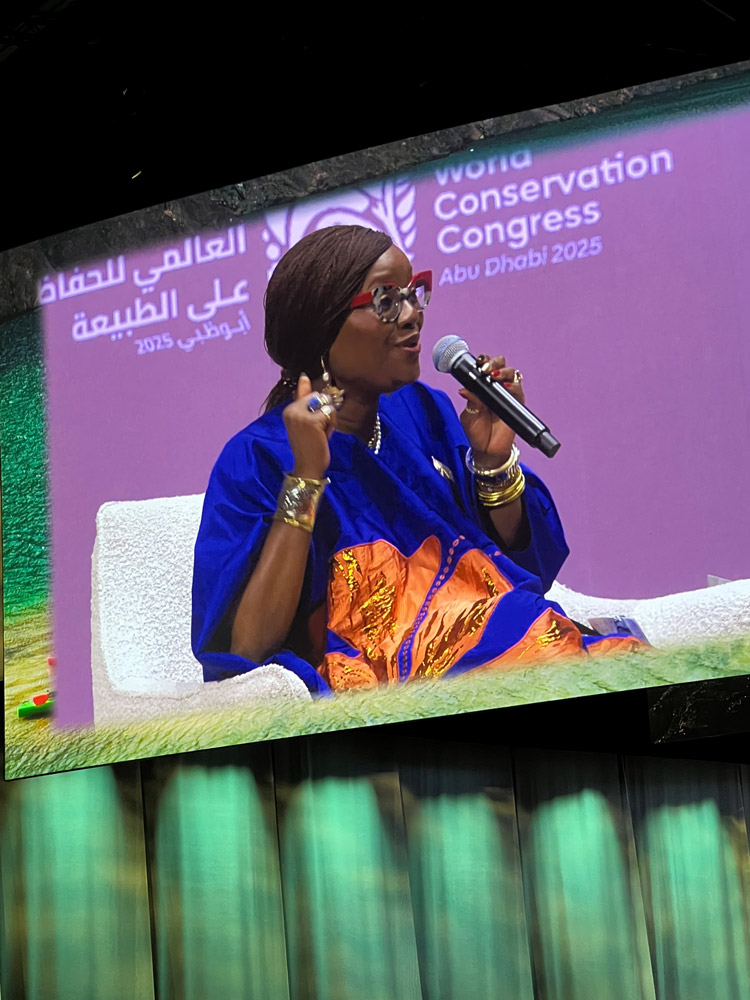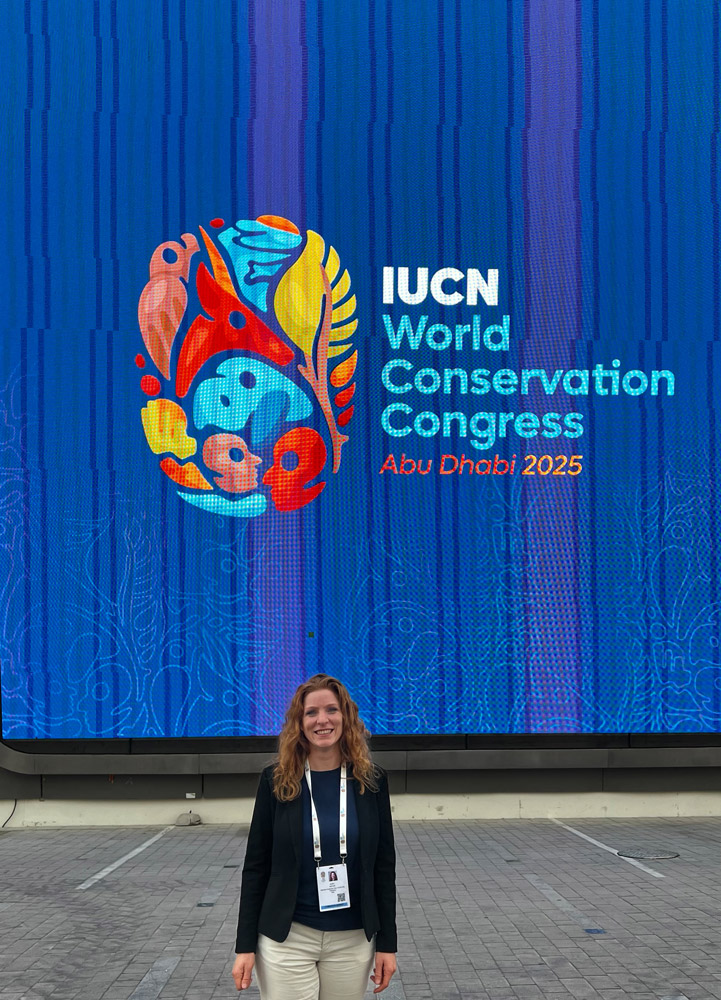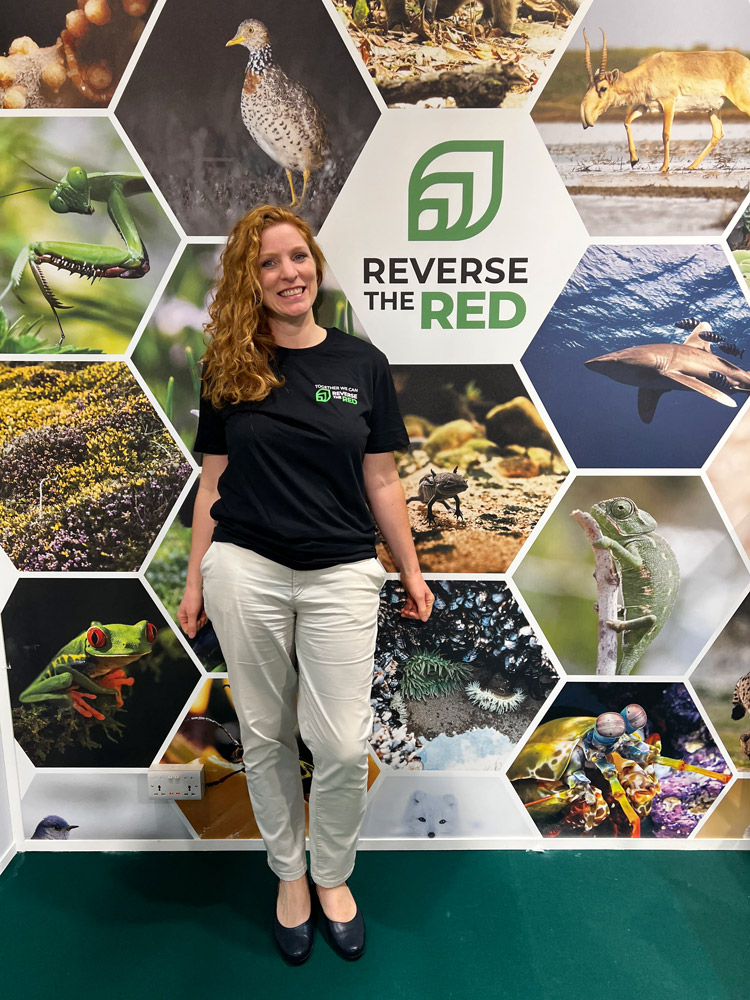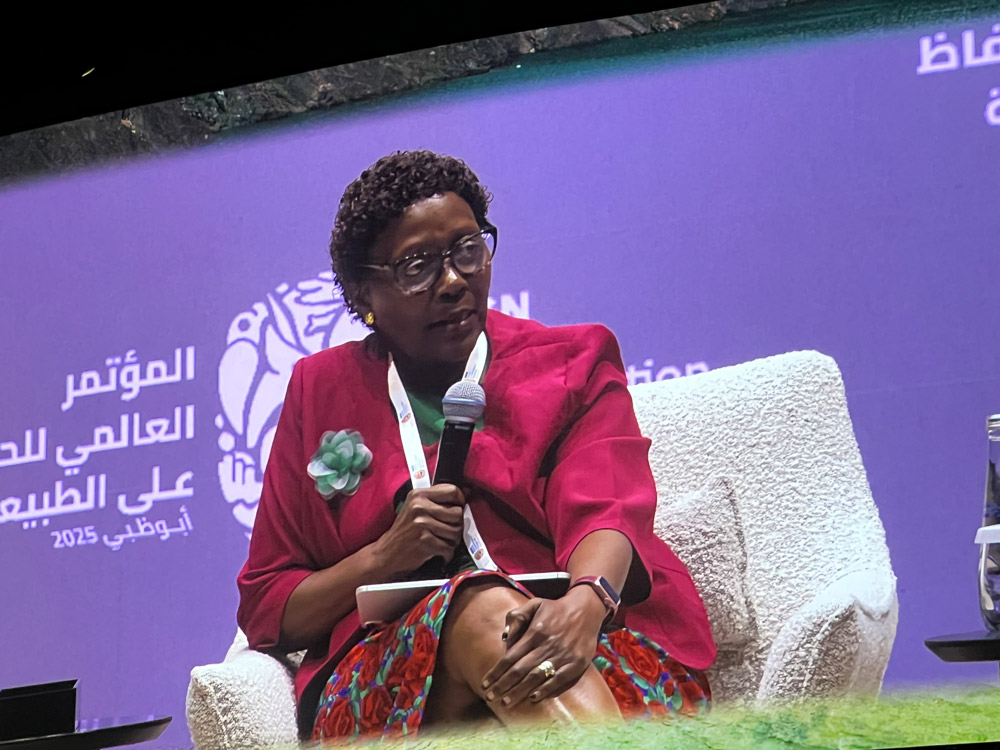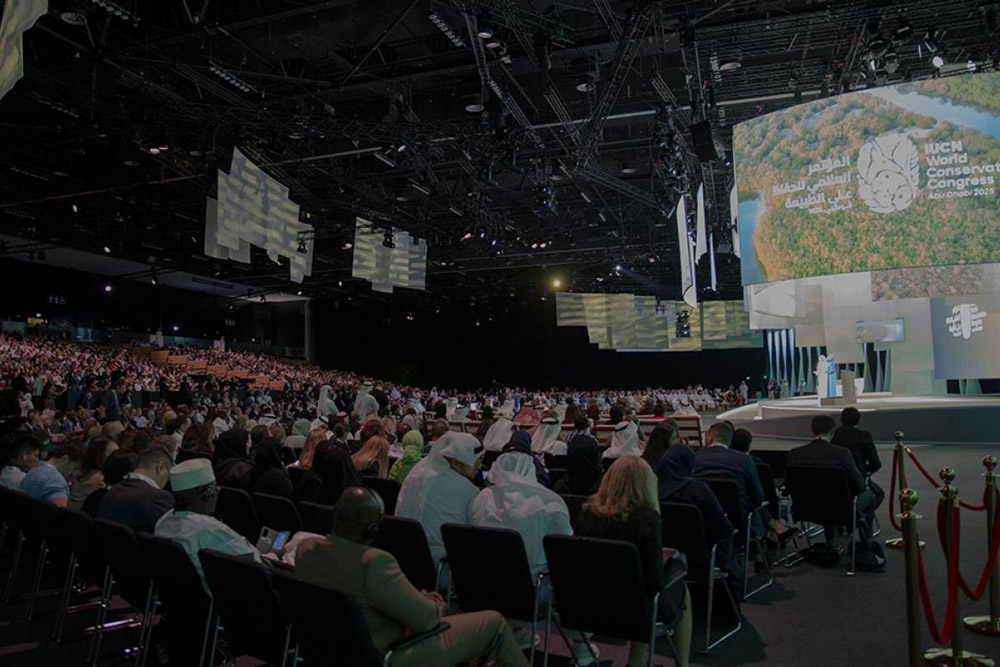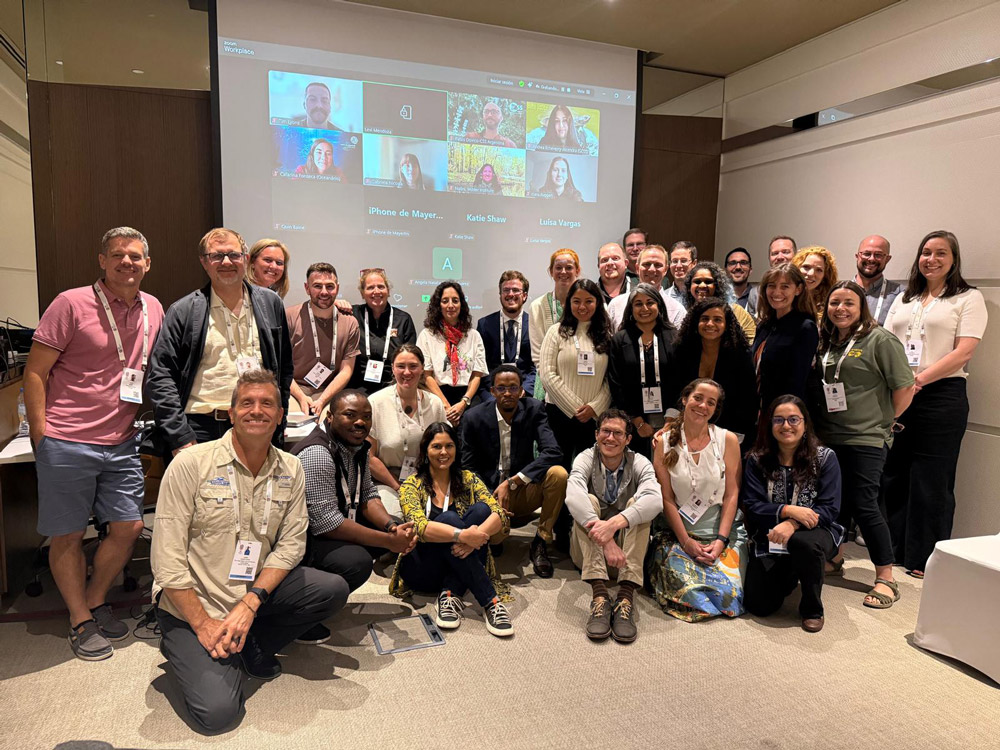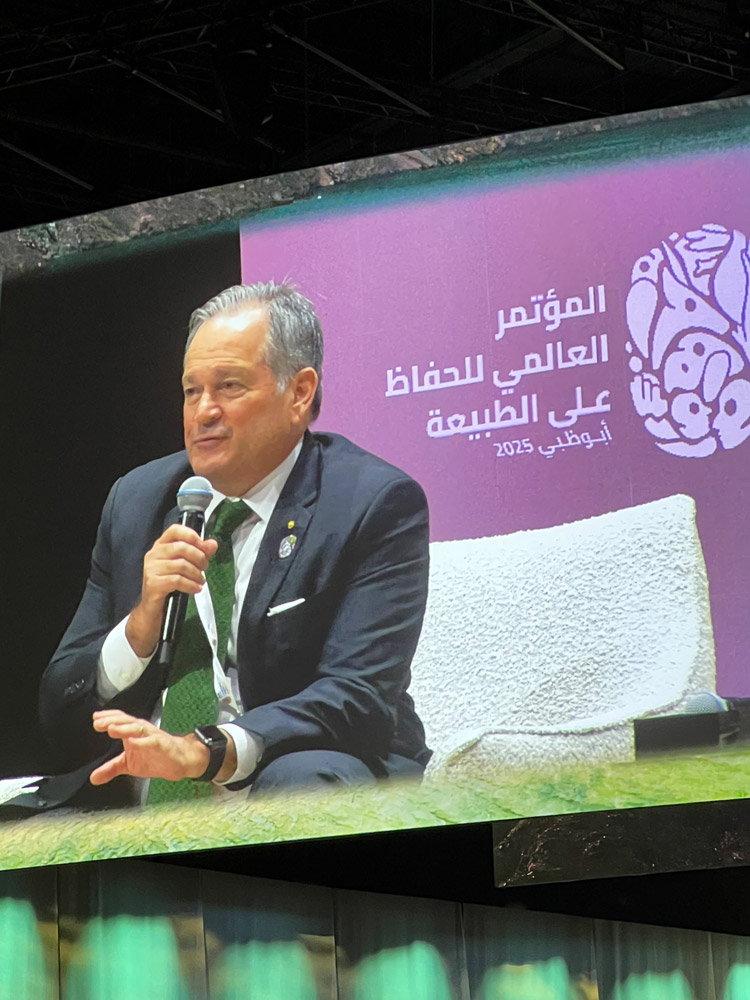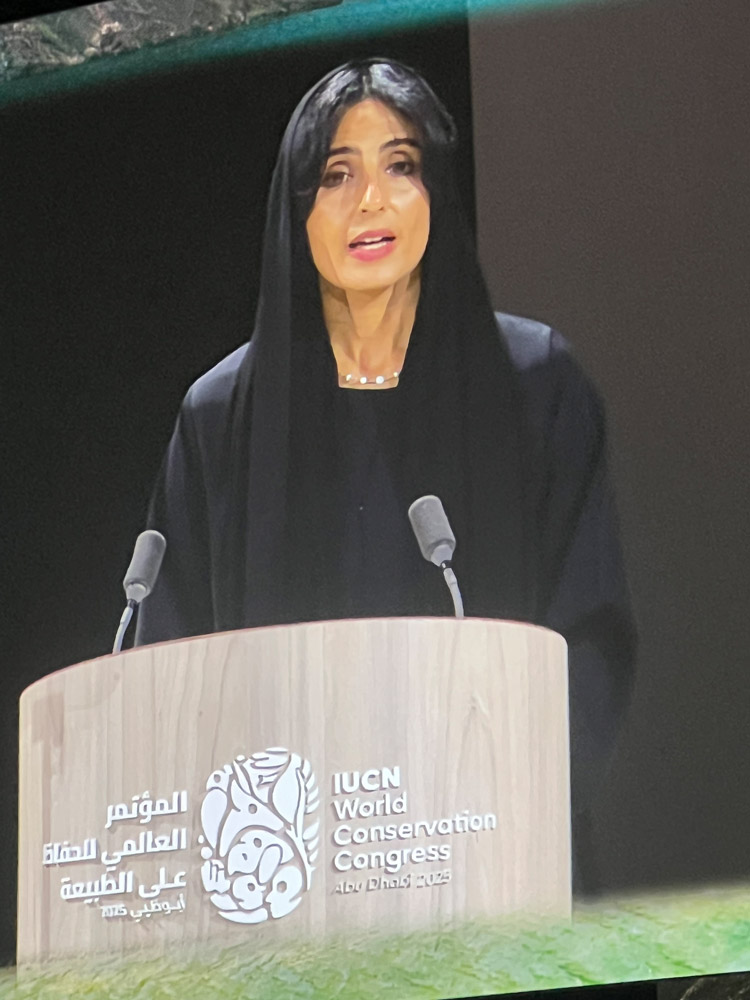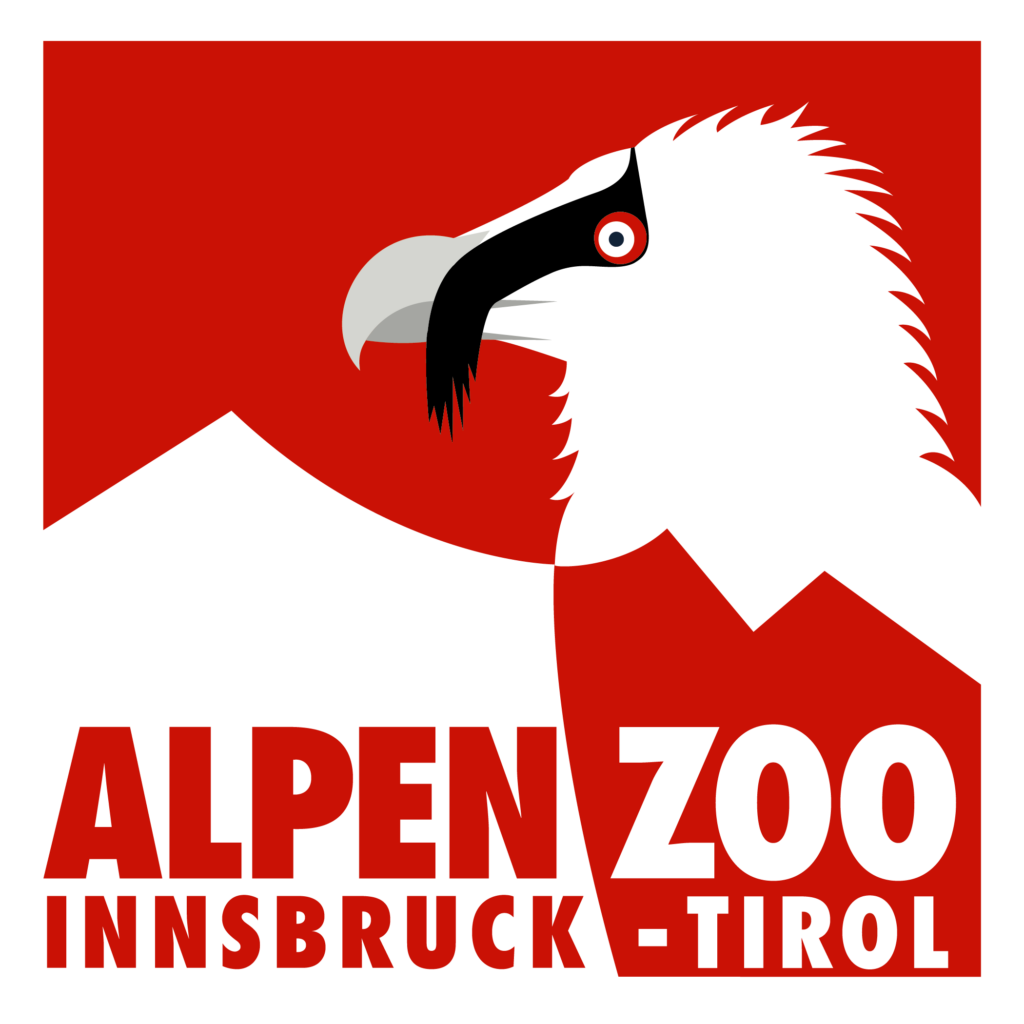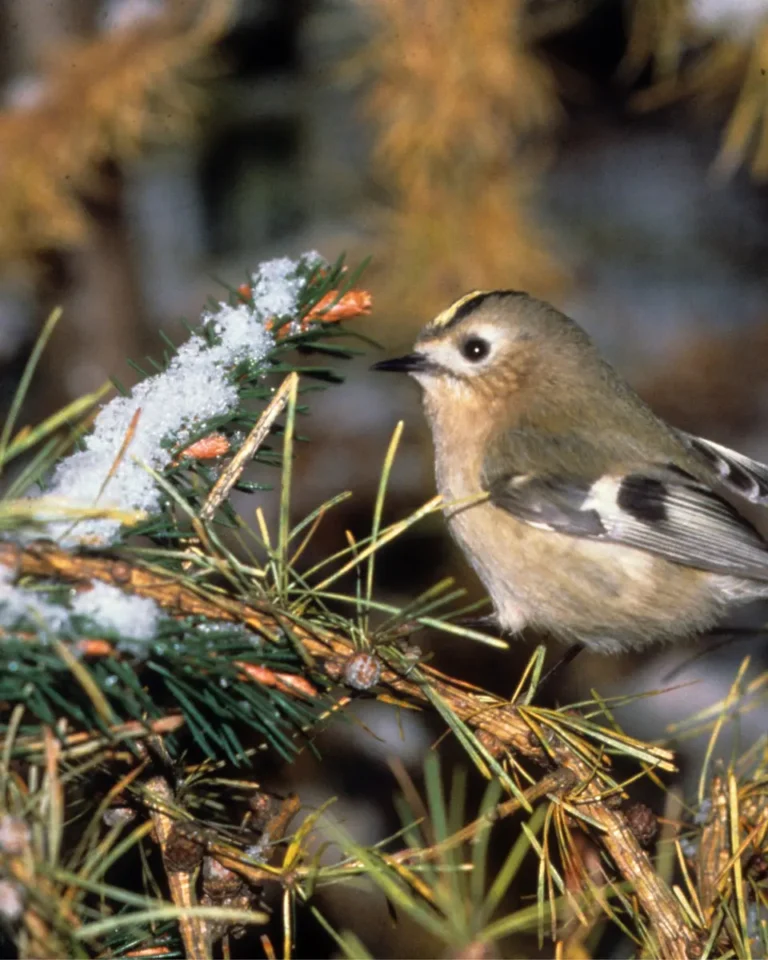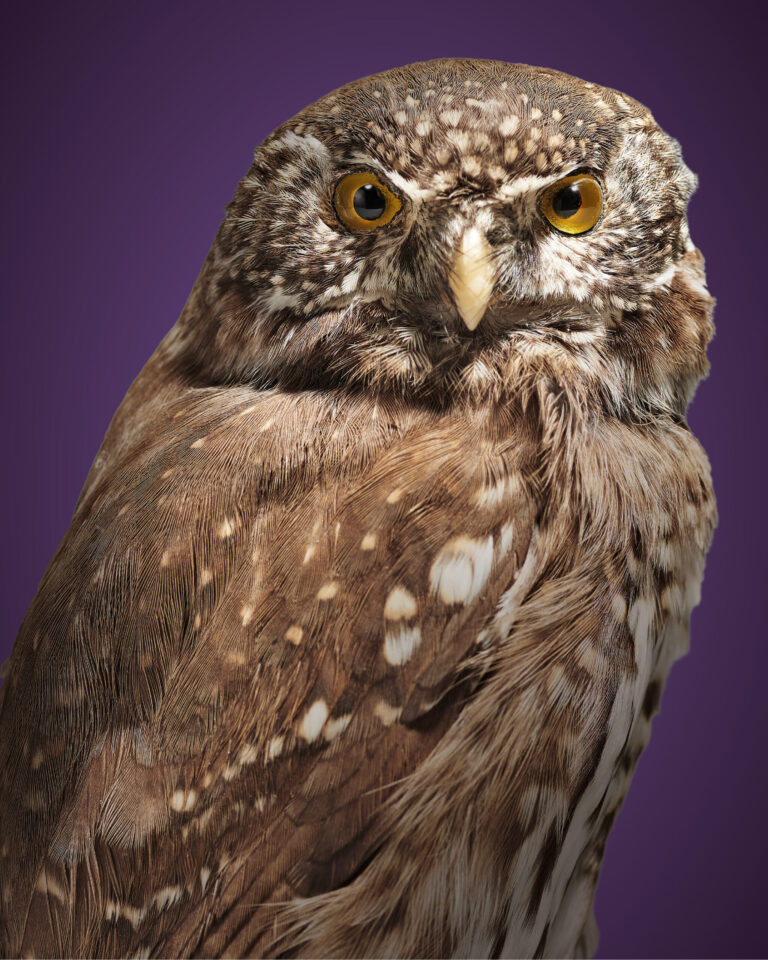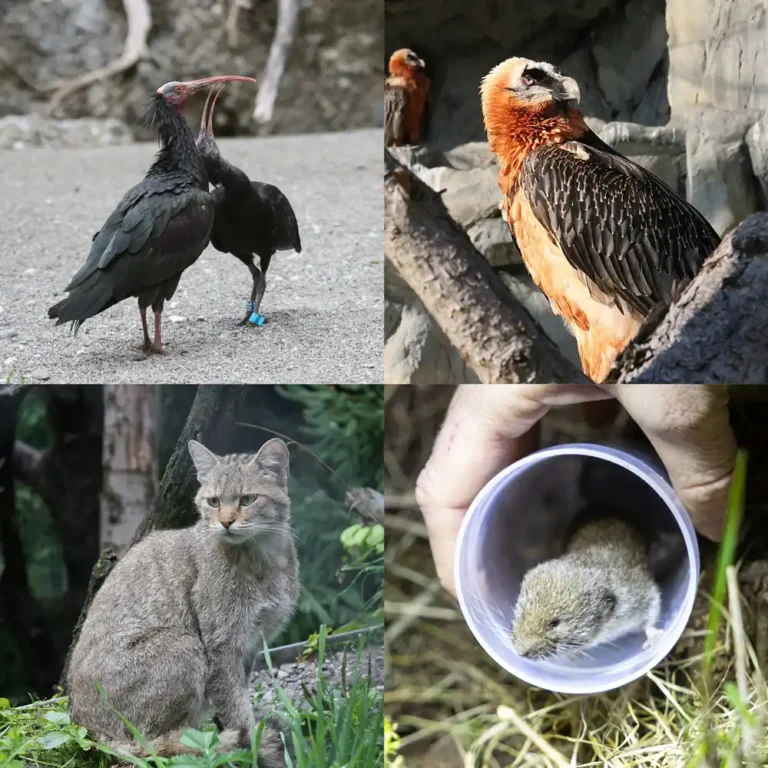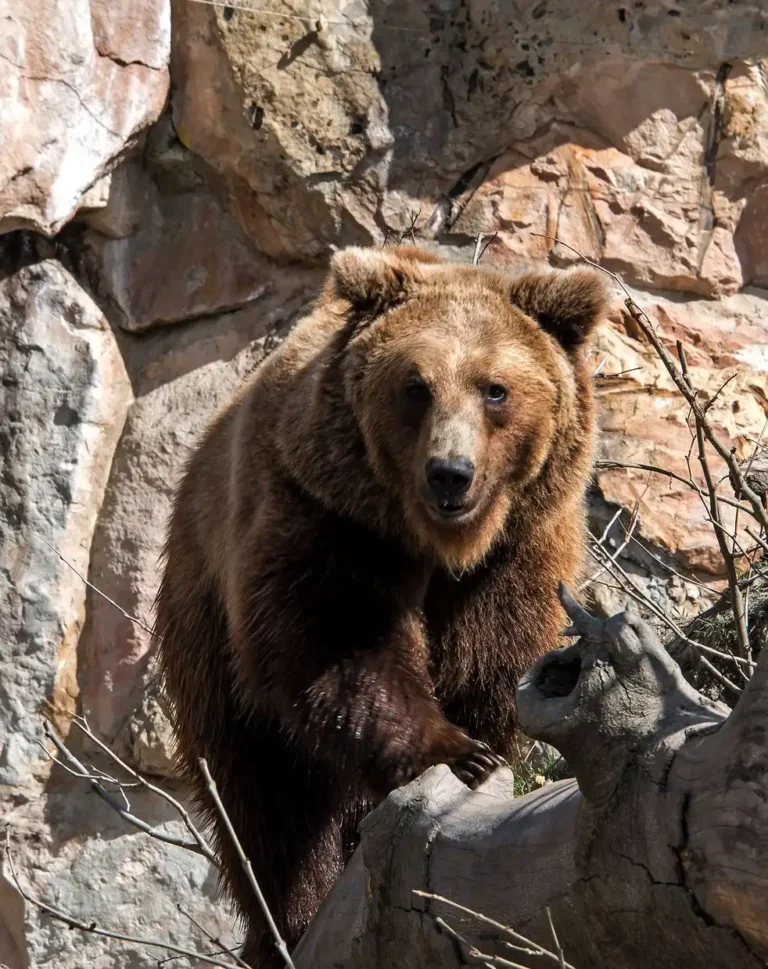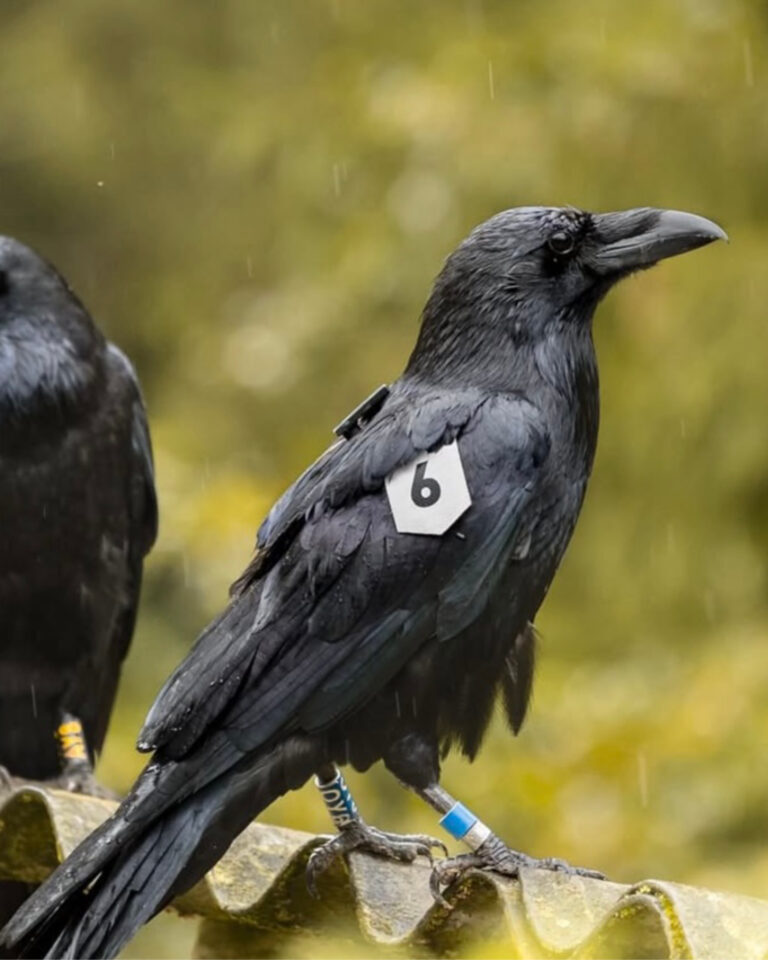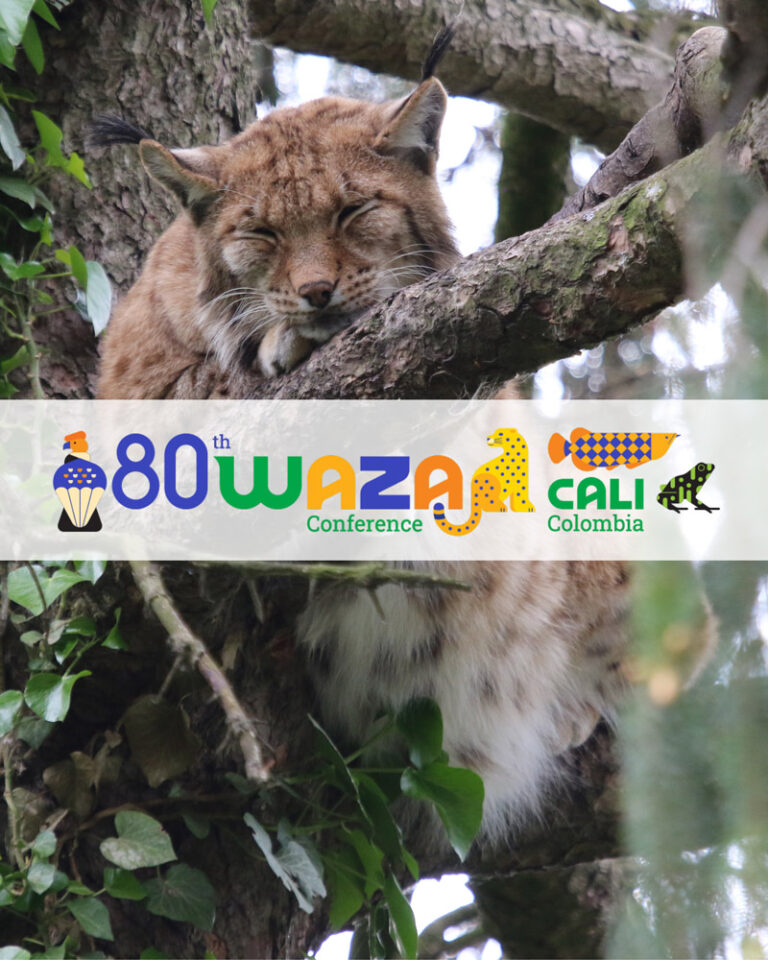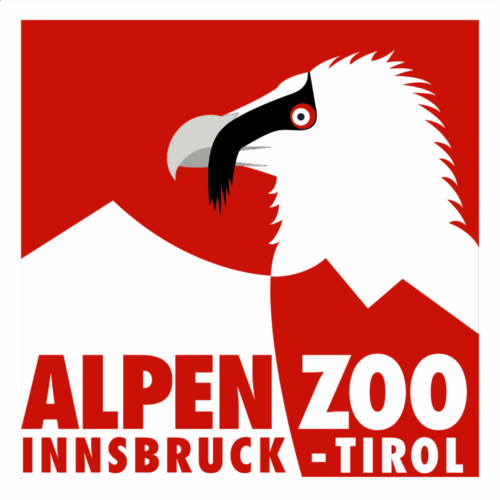New impetus for international nature and species conservation
Alpenzoo Innsbruck-Tirol took part in the World Conservation Congress 2025 in Abu Dhabi (United Arab Emirates) this month. This congress is one of the most important international events for nature and species conservation and is organised every four years by the International Union for Conservation of Nature (IUCN), the world's largest nature conservation network with over 1,400 members.
More than 10,000 delegates from politics, science, indigenous communities, NGOs, business and zoological and botanical institutions came together under the motto „Powering Transformative Conservation“ to discuss the global challenges of nature conservation.
For the Alpine Zoo Dr Nora Weyer, species conservation coordinator and head of the IUCN Centre for Species Survival - CSS for Small Mammals, took part in the congress. It was a special milestone for the zoo: For the first time, the Alpine Zoo took part as an official, voting member of the IUCN and was able to help decide on proposals that will shape the IUCN's strategic direction for the coming years - for example on topics such as wildlife trade, synthetic biology and conservation ethics.
Global networking and cooperation
In addition to the plenary sessions, numerous side events offered the opportunity to network with colleagues from all over the world. The exchange with international representatives from zoos such as Dublin, Toronto, Chester, Berlin, Cologne and Vienna as well as with organisations such as Reverse the Red, WAZA (World Association of Zoos and Aquariums) and EAZA (European Association of Zoos and Aquaria) highlighted the close global cooperation in species conservation.
The congress also included the 3rd network meeting of the IUCN Centres for Species Survival (CSS) took place. Strategies for mentoring, advocacy and a unified voice for the global network were developed together. Dr Nora Weyer moderated a successful networking session together with a colleague from Cologne Zoo.
Structure and highlights of the congress
The congress was divided into three main parts:
- Forum: Platform for exchange, science and innovation. Contributions from young conservationists and indigenous representatives were particularly inspiring. At the summits Business & Nature and Philanthropy new instruments for the effective organisation of nature conservation investments were presented. Emotional highlights were the awarding of 24 protected areas and the honouring of the deceased chimpanzee researcher Jane Goodall for her life's work.
- Exhibition: Over 100 governmental and non-governmental organisations presented new projects, technologies and educational programmes. Topics ranging from marine conservation and reforestation to educational initiatives in nature conservation were discussed.
- General Meeting: This is where the motions of the IUCN members are discussed and adopted. Zoos also submitted or supported several motions this year. Although the Alpine Zoo, as a new member, was not yet able to submit its own motions, it actively participated in the technical background discussions on the motions and, of course, the votes.
The members also elected the IUCN leadership for the next four years. Their Excellency Razan Khalifa Al Mubarak will serve a second term as IUCN President together with newly elected leaders in the commissions and the Council. After nine years under the leadership of Dr Jon Paul Rodríguez, the Species Survival Commission (SSC) Vivek Menon as new Chairman, an Indian conservationist, as the new chairman. Menon will continue the Commission's work to protect endangered species worldwide. The new members elected to the IUCN Council for Western Europe include the Dane Ann-Katrine Garn, Head of the Nature Conservation Department at Copenhagen Zoo, which will also strengthen the commitment of zoos to global species conservation.
Zoos as bridge builders in species conservation
Zoos, aquariums and botanical gardens already play a central role in the implementation of international conservation strategies. The IUCN recognises their contribution through Conservation breeding programmes, scientific research, reintroductions and environmental education explicitly. Ex situ measures - i.e. protection outside the natural habitat - were emphasised as an indispensable component of holistic nature conservation concepts.
The new edition of the Red List shows with almost 50,000 endangered species, that the biodiversity crisis continues unabated. This makes targeted conservation measures, to which zoos make a decisive contribution, all the more important - for example through monitoring, breeding programmes and reintroductions.
The Alpine Zoo realises these goals in concrete terms: among other things, it coordinates the monitoring and protection project for the highly endangered Bavarian short-eared mouse, operates the IUCN Species Conservation Centre for Small Mammals and is a partner of the global initiative „Reverse the Red“, which aims to reverse the trend of species extinction.
Zoo Director Dr André Stadler is involved in the IUCN specialised groups for cats and deer, Species conservation coordinator Dr Nora Weyer in the specialist groups for small mammals and Afrotheria and as an expert for the IUCN Red List. The Alpine Zoo also participates in European Endangered Species Programmes (EEPs) and successful reintroductions of Bearded vultures, northern bald ibises, bison and other endangered species.
Outlook: Responsibility for the future
The congress ended with the „Abu Dhabi Call to Action“ - an appeal to governments, companies and civil society to anchor nature and species conservation as the basis for sustainable development.
„We need a new understanding of responsibility,“ was one of the key closing messages. „Only if we combine knowledge, passion and the ability to act can we secure the nature of the future.“
The Alpine Zoo proudly looks back on its first active participation in the World Conservation Congress. The exchange with international partners was impressive, like global co-operation can bring concrete results for the protection of nature.
“In future, the Alpenzoo will be even more involved as part of this global movement,” says Director Dr Stadler, “for the preservation of biodiversity in the Alps and beyond.”
Further links:
Among the IUCN Species Conservation Centres worldwide, including the Alpine Zoo Small Mammal Centre: https://iucn.org/our-union/commissions/species-survival-commission/partners-and-donors/centers-species-survival
To the World Conservation Congress: https://iucncongress2025.org/
On the new leadership of the IUCN: https://iucn.org/press-release/202510/iucn-members-elect-president-new-council-and-commission-chairs
To the official congress report: https://enb.iisd.org/2025-iucn-world-conservation-congress
The attached photos show the representatives of the IUCN Species Conservation Centres at the networking meeting during the Congress, as well as impressions of the Congress Centre and some of the many inspiring speakers and participants, in particular:
Razan Khalifa Al Mubarak, President of the International Union for Conservation of Nature (IUCN).
Dr Grethel Aguilar is Director General of the IUCN.
Elizabeth Maruma Mrema is Deputy Secretary-General of the United Nations and Deputy Executive Director of the United Nations Environment Programme (UNEP).
Dr Musonda Mumba is the Secretary General of the Ramsar Convention on Wetlands.
Juan Carlos Navarro is Panama's Minister of the Environment.
